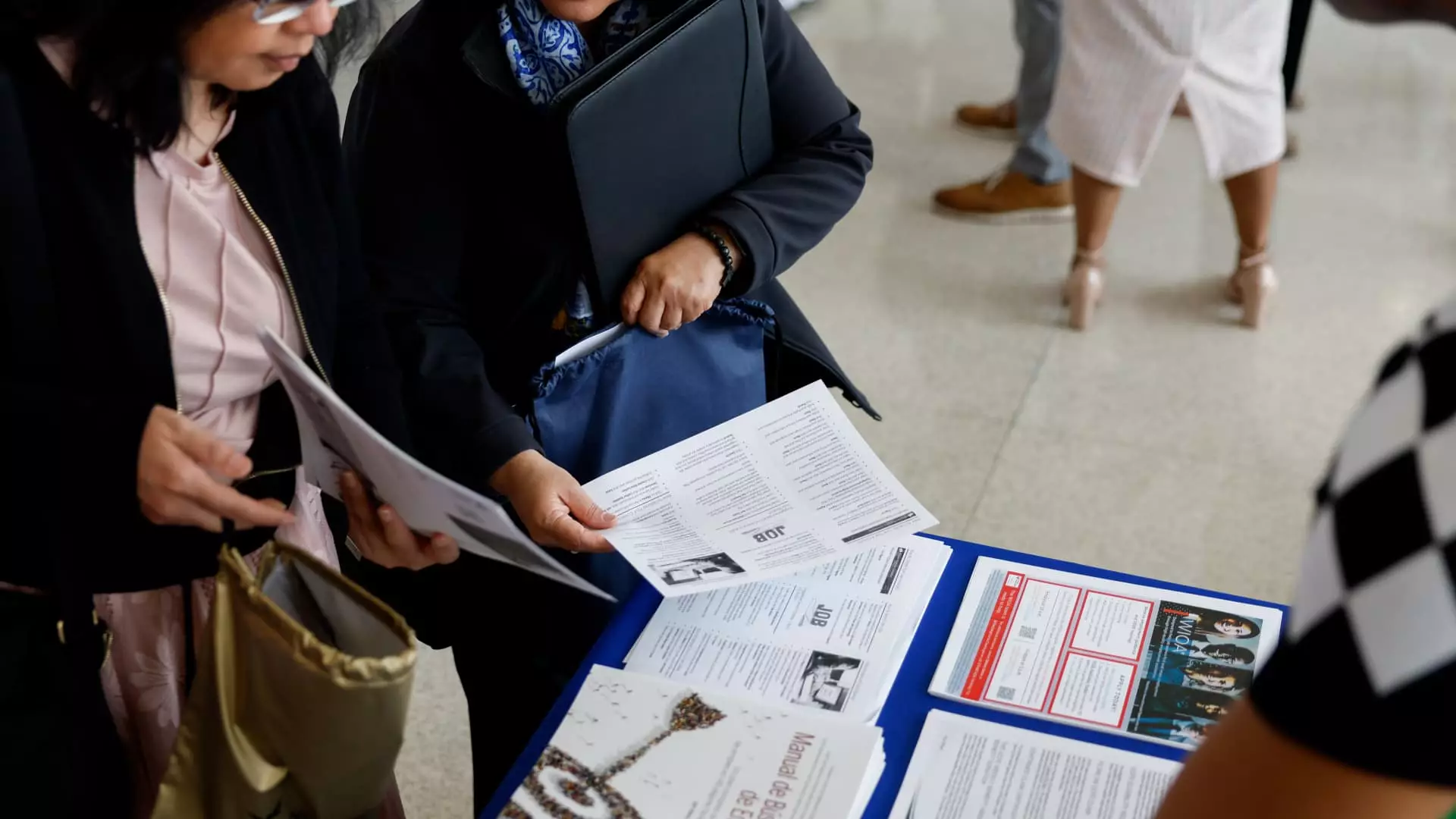In the current job market, a troubling paradox exists: while the unemployment rate hovers around a low 4.2%, and layoffs are at a historic low, the struggle for jobseekers remains palpable. It’s a classic case of ‘on paper’ success clashing with ground reality. The hiring landscape is meandering at its slowest pace since 2014; this contradiction defines the plight of jobseekers today. Faced with a “low firing, low hiring” environment, potential candidates find themselves navigating a maze of uncertainty, where opportunities seem elusive in an otherwise thriving economy.
Rising Long-Term Unemployment: The Human Cost
The statistics are startling. A staggering 23.5% of those unemployed have been seeking work for more than six months, marking a notable rise from 19.6% a year ago. This increase in long-term unemployment should alarm policymakers and economists alike, as it signifies a growing divide in the labor market. Many responsible for this trend are left on the fringes, struggling against an invisible barrier that prevents them from reintegrating into the workforce. Even as businesses seem eager to hire—if only cautiously—the long-term unemployed battle not just a lack of opportunities, but also the psychological implications of extended joblessness.
The barriers to entry into this job market are not solely about availability; they represent a deeper rift. Those currently employed are clinging to their positions, increasing job security paranoia. What does this mean for the individuals attempting to step in? It underscores the urgency for democratizing access to employment opportunities, so that gaps don’t widen further.
The Business Environment’s Impact on Hiring Practices
Critically, the economic atmosphere is shifting, shaped by various forces such as trade tensions and diminishing consumer confidence. These factors are influencing hiring patterns as companies approach employment with extreme caution. It is disheartening to note that organizations are refraining from bringing fresh talent onboard, despite many having the resources to do so. This cautious behavior has extensive ramifications for jobseekers, who find themselves navigating an increasingly complex path fraught with challenges.
Experts like Cory Stahle point to these economic headwinds with dire predictions about the future. The increasing hesitation among employers mirrors a broader trend of corporate reticence. As the business landscape changes, there is a pressing need to refresh and revamp the strategies employed by those in the job market. It may be time to adapt and resonate with the current mood to capitalize on whatever opportunities arise, however infrequent.
The Role of Networking: Building Bridges
In light of the formidable competition for jobs, utilizing networks has rapidly escalated in importance. A staggering number of job openings arise not through advertised positions, but through personal connections and referrals. Thus, fostering relationships has never been more crucial. Instead of relying solely on impersonal job applications, jobseekers are urged to engage proactively with their network—an imperative shift in approach given the current job climate.
Career experts emphasize the idea of making oneself “undeniable” to potential employers. Jobseekers must go beyond the conventional means of application and leverage human connection. Attending conferences, seminars, and more intimate gatherings presents the chance to engage in meaningful dialogue within one’s industry. Instead of merely submitting an application, these job candidates could cultivate relationships that lead to introspection about the skills and qualities one brings to the table. This strategic approach can not only differentiate candidates, but also carve a niche for them in a crowded marketplace.
Personal Development: Filling the Gaps
Long-term unemployment also begs the question of skills and personal development. As job hunters grapple with their extended absence from the workforce, many risk being perceived as ‘stale’ in terms of relevant capabilities. This reality drives home the importance of using slower periods to upgrade skill sets—adding value to resumes and enhancing employability.
Continuing education, even at minimal costs, is a viable pathway out of an employment stagnation. By earning new certifications or attending online courses, jobseekers can showcase their initiative and readiness for the evolving workforce. Employers often discern candidates who exercise mindful self-development even in challenging times, marking them as desirable talent.
Being Open to Opportunities: Flexibility is Key
The advice of remaining open to various forms of employment has never been more pertinent. The time of waiting for the ‘perfect’ job could foster a detrimental mindset. Instead, embracing contract work, hybrid roles, or opportunities in adjacent industries may provide short-term employment solutions that serve dual purposes: they fill the income gap and help expand a professional network.
The prudent strategy here is to leverage any available opportunity as stepping stones toward one’s ultimate career aspirations, creating avenues for learning and skills enhancement. Short-term roles present a unique chance to grow, develop connections, and sharpen one’s professional skills—an essential endeavor in an unnerving job market.
In this evolving landscape, it’s clear that adaptability and strategic action are non-negotiable for today’s job seekers navigating a complex environment fraught with contradictions. The power of personal agency can’t be overstated when one finds themselves caught in such an anomalous economic situation.

